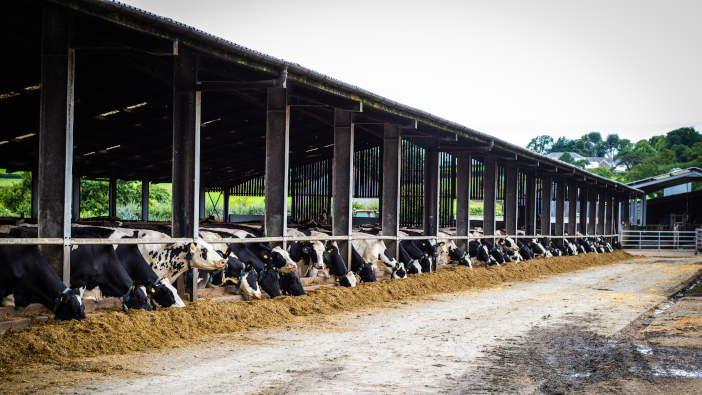Massey Feeds is advising growers that careful ration balancing will be crucial this winter to address low energy levels in first and second-cut silage.
The company analysed over 500 samples, with trends showing fairly average results caused by higher neutral detergent fibre (NDF). This was largely caused by the later cuts due to the poor weather.
Speaking at the UK Dairy Day last week, David Wilde, national ruminant technical manager for Massey Feeds, said silages taken 2-3 weeks late are more mature and have lower nutrient values compared to those taken at the optimum time.
This lower fibre digestibility would be unavoidable for many farmers, he added.
“Results are fairly average except for one of two things. Due to the weather, many silages were cut later than desired, so we had more mature plants at harvest.
“Added to this, some silages were unavoidably wilted for too long, resulting in drier silages and further nutrient losses.
“However, on average, there are good fermentation acid profiles and some residual sugars available for the rumen bacteria. Ash is moderate and pH is just above 4, which means silages are rumen friendly.”
A huge range
As NDF increases, the metabolisable energy decreases. More than 300 first-cut samples showed a metabolisable energy average of 10.5 megajoules/kg of dry matter (DM) with 200 second cuts showing a slight energy improvement of 10.7MJ/kg DM.
Protein was also back this year, at 12.5% compared to 13% in 2023.
“Quite a few samples fell below 11%, reflecting the low protein seen in pre-cut grass analyses. This could be because limited fertiliser was applied due to the poor weather, or fertiliser might have been washed out or not taken up by the plant,” adds David.
However, he said that there was a huge range, with some silages being of excellent quality. As such, he advised farmers to conduct their own analyses regularly.
High alcohol levels
One thing that growers should look out for is higher alcohol levels, with extreme highs of 20g/kg DM seen last year. This is caused during the fermentation process.
“If the clamp is not consolidated well, there is a greater chance of higher alcohols. Naturally occurring heterofermentative bacteria can also result in higher alcohol levels.”
David added that higher-fibre silages can be more difficult to consolidate, resulting in aerobic pockets that produce these compounds.
“Depending on the type of alcohol, these may have a negative impact on the rumen bacteria.
“Care will need to be taken when opening the clamp to ensure there is no aerobic deterioration. Ideally, the face should be worked across within three days.”
For winter 2024, Massey has included an essential oil complex in its range of compound feeds, which it states will help cows use the diet more efficiently.
“Its two-pronged mode of action supports the rumen bacteria to extract more from the diet, pushing the fermentation pathway towards greater levels of propionate – a great energy precursor for the cow.
“Its second action is in the intestines, enabling greater nutrient absorption in the gut.”
For more information go to www.masseyfeeds.co.uk


